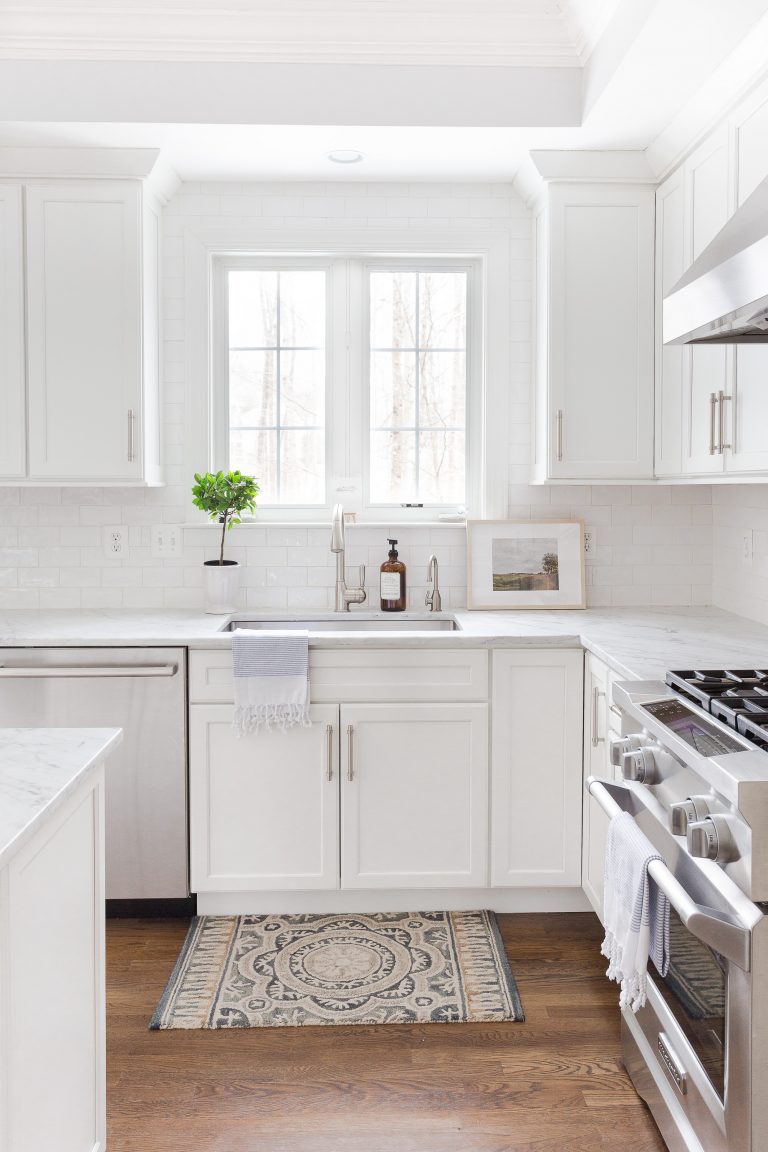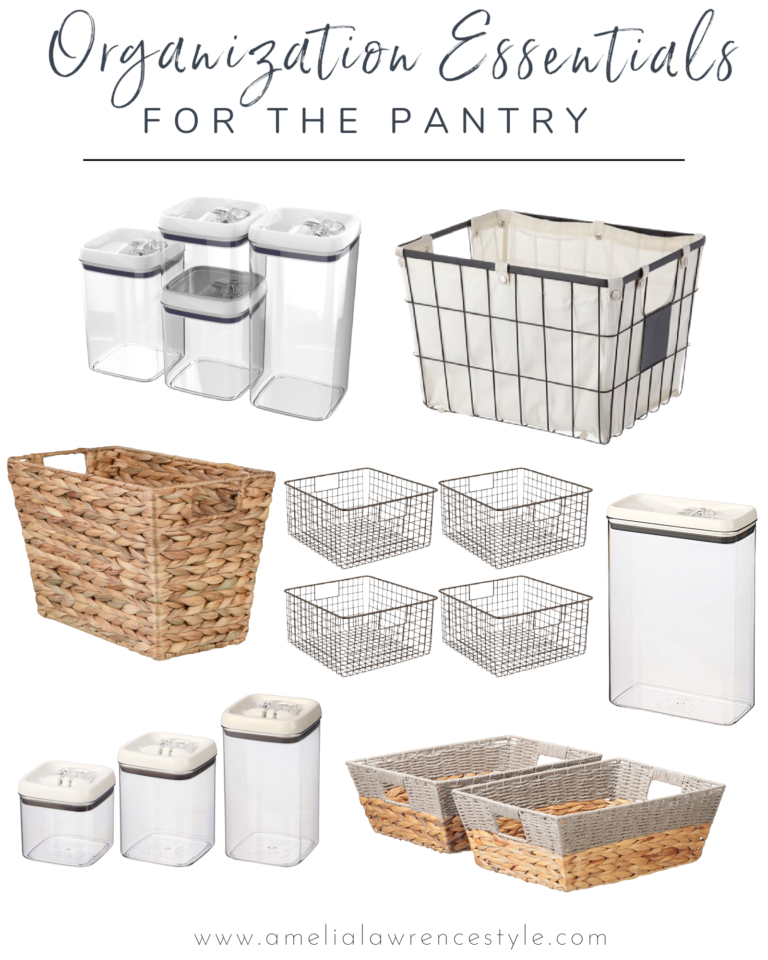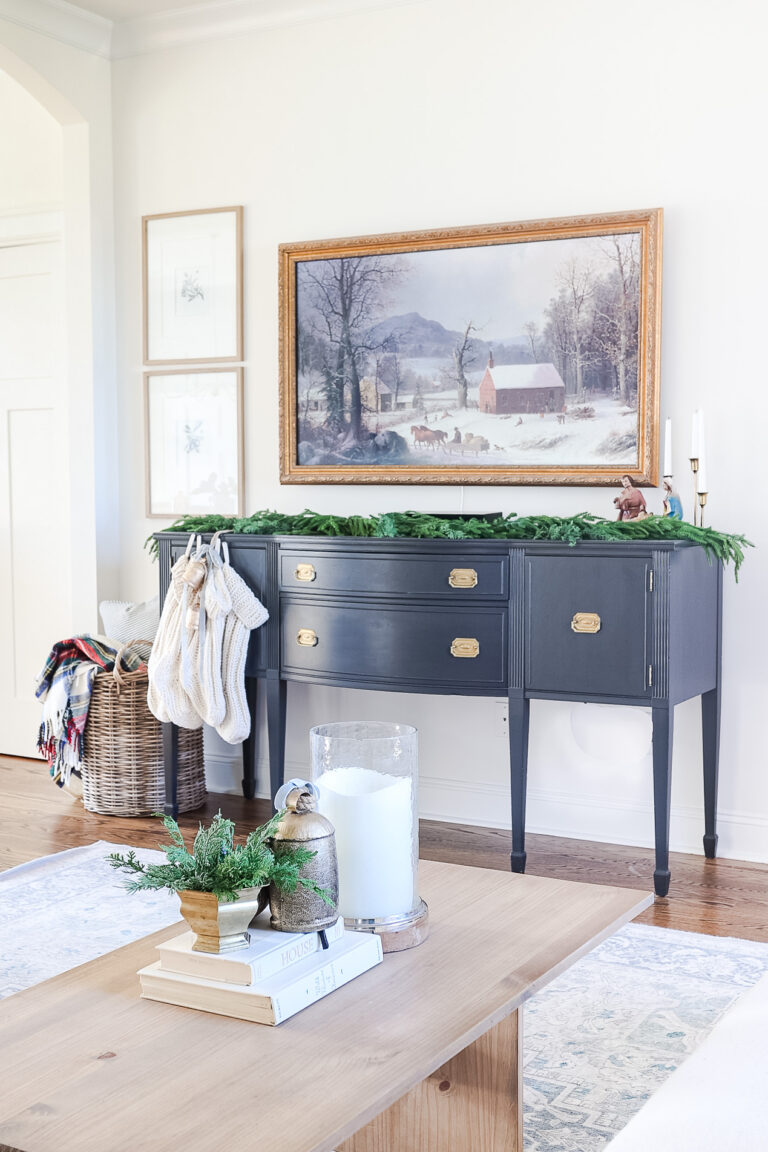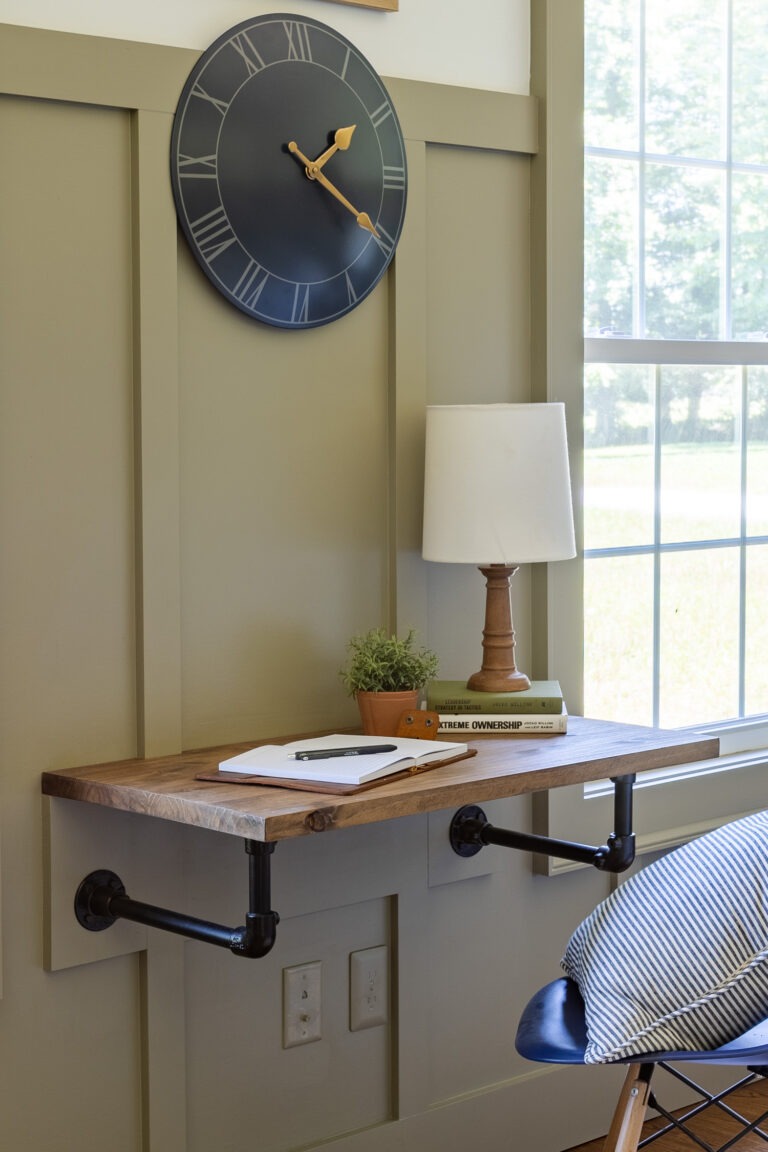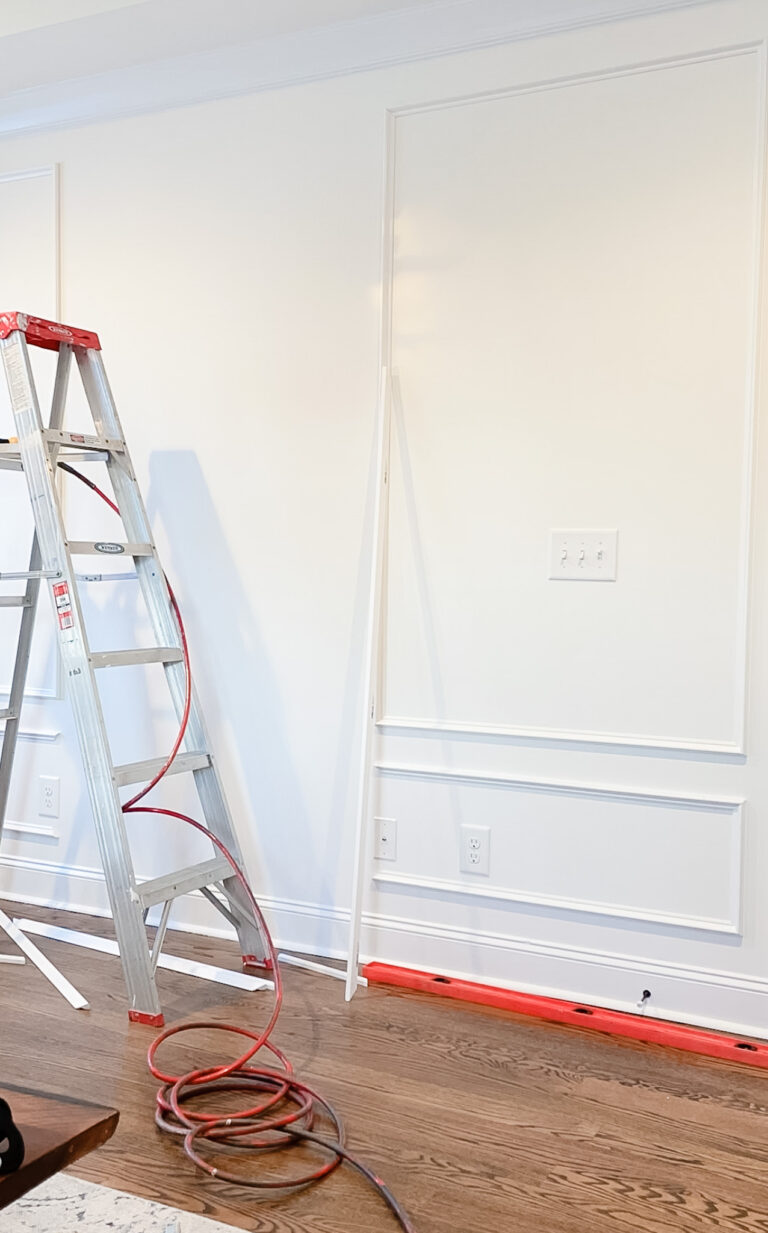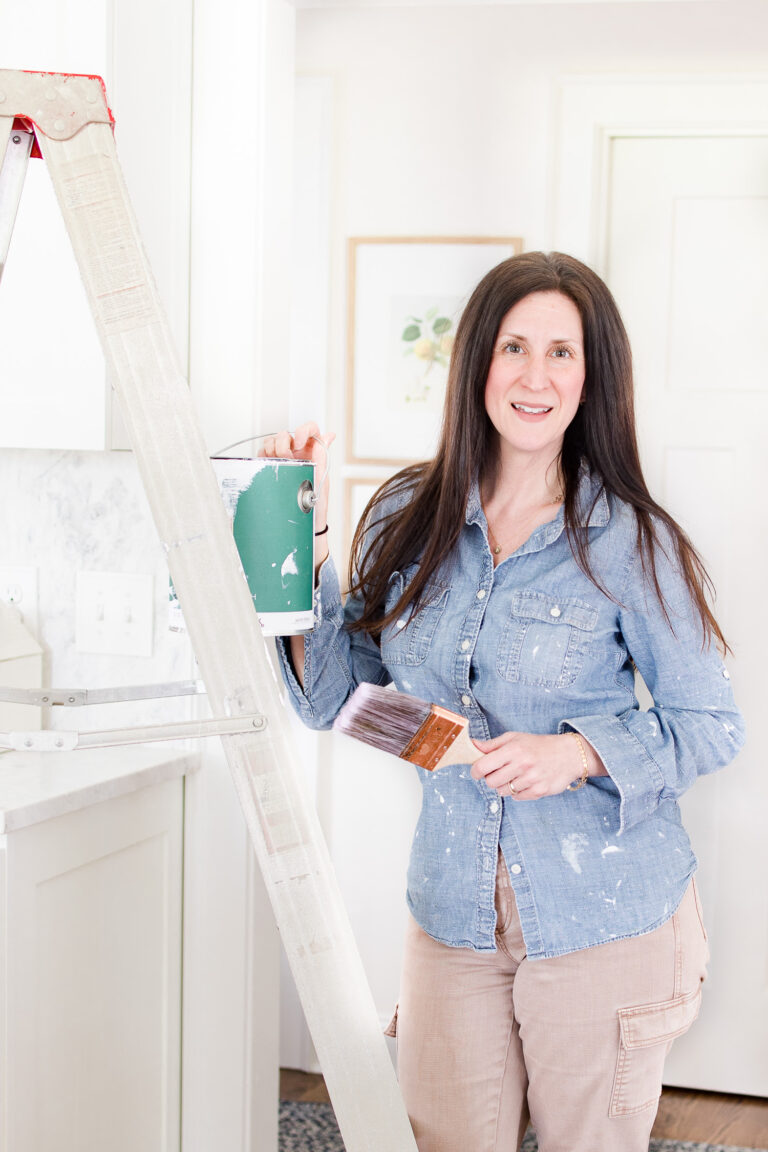Best Flooring for Bathrooms
Looking to remodel your bathroom? Here is a round-up of best flooring for bathrooms that withstand water, look great and hit all different budgets. Bathroom flooring has a big job to perform and we must choose our flooring carefully. Here is a guide to help answer questions you may have.
When we remodeled two bathrooms and a kitchen, almost three years ago, we asked ourselves a lot of questions about tile and best flooring options. I hope this guide, from an everyday homeowner, will help you in case you are in the midst of a tile job or foresee one soon.
Affiliate links are provided below. Please see my full disclosure.
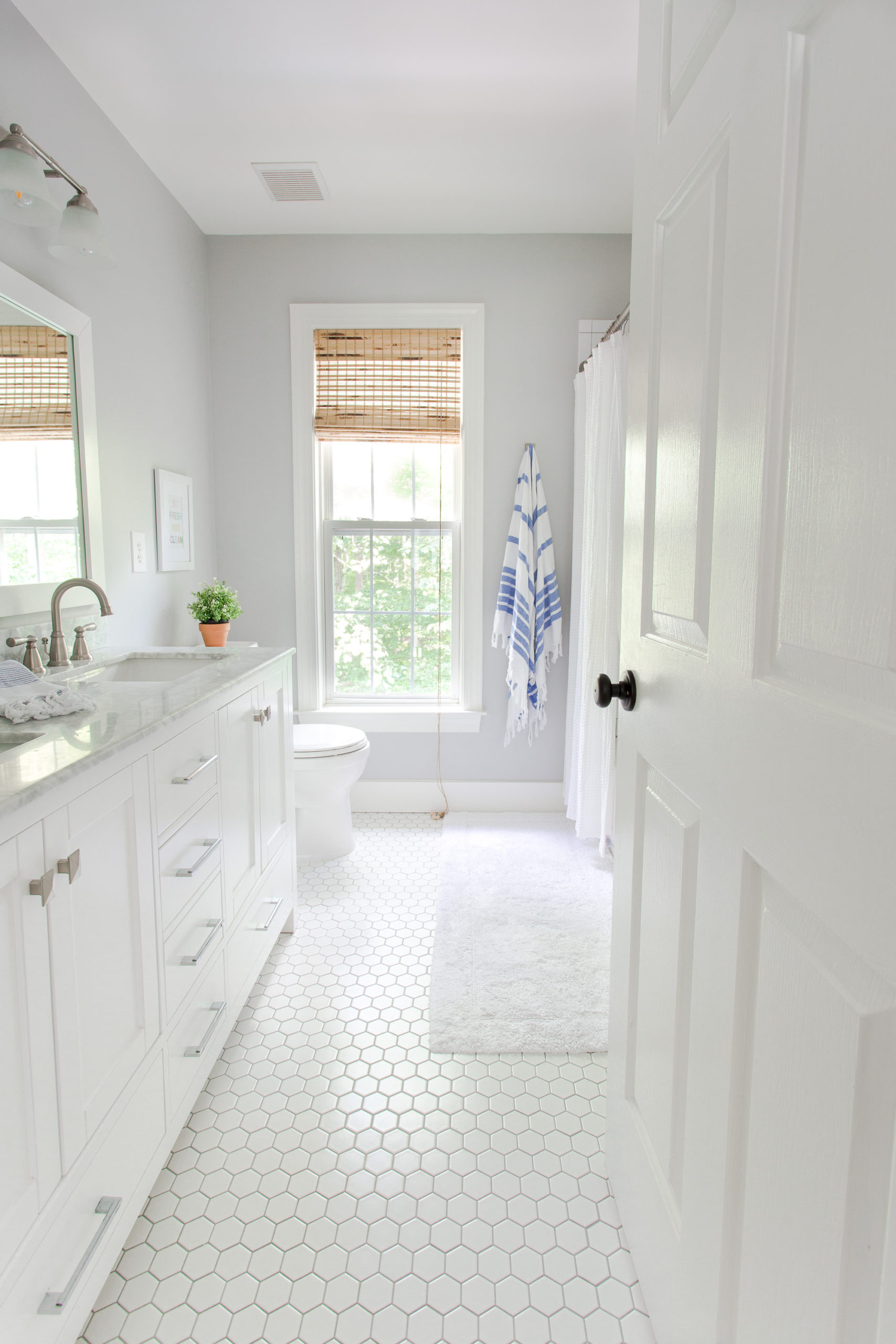
Cabinet | Floor Tile | Shower Tile | Shower Curtain | Bath Rug | Hand Towel | Bath Towel | Faucet | Blinds | Lights | Basket | Topiary
When it came to remodeling a kids and guest bath we wanted to use the best resources available all while being budget conscience. Let’s face it; most of us don’t have a never ending checking account; therefore, we want to select products that are quality, budget friendly and will still be stylish years down the road.
Flooring for a bathroom needs to meet certain criteria: it must stand up against a lot of water exposure, fight mold, be slip-resistant and look great! I would say bathroom flooring has a big job to perform; therefore, we must choose our flooring carefully.
Here’s a list of the best flooring options for bathrooms I rounded up.
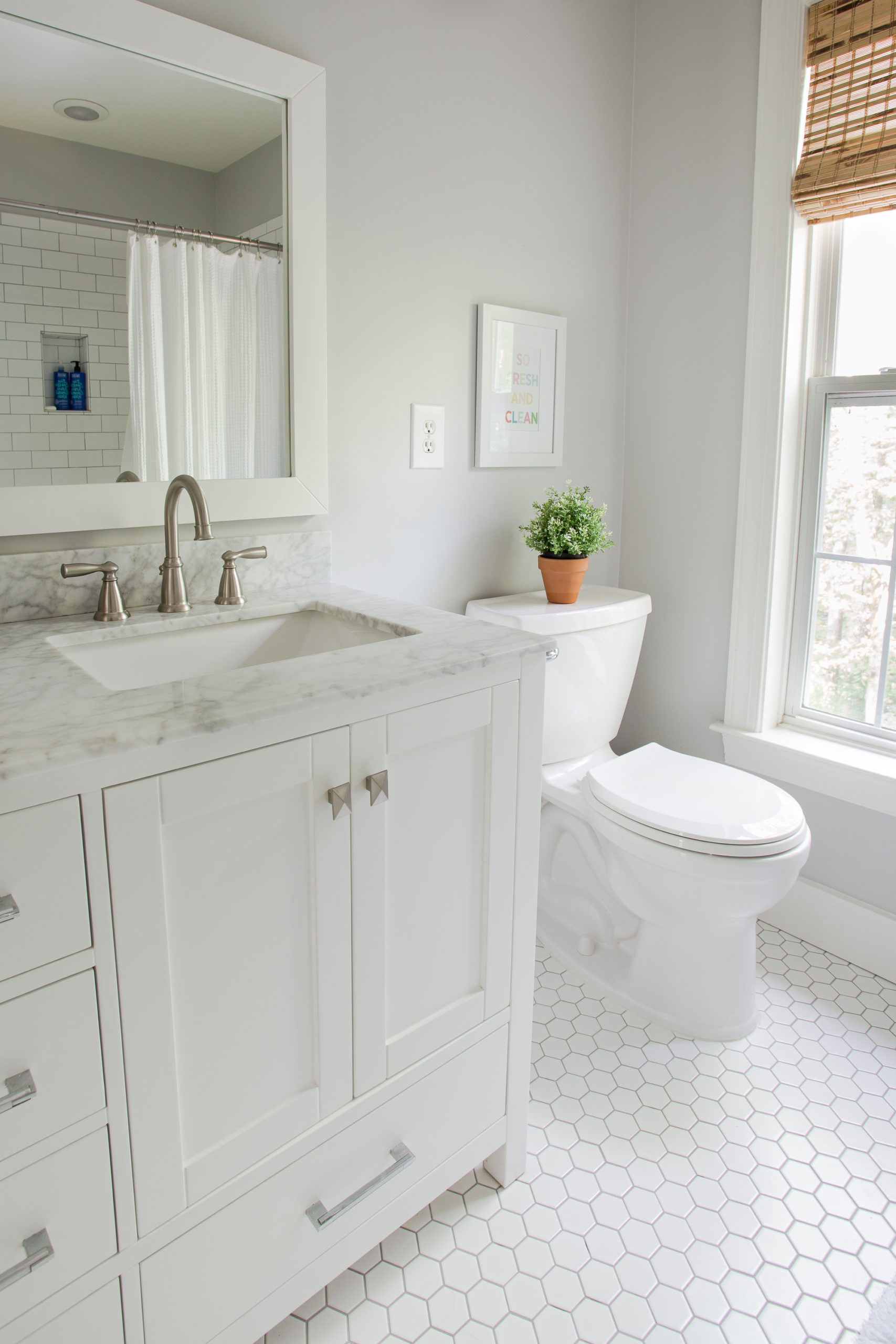
Porcelain and Ceramic Tile for Bathroom Floors
First on the list is the popular porcelain or ceramic tiles for a bathroom. Are porcelain and ceramic different? Yes! There are some variances to each; however, both are good choices for a bathroom.
With porcelain or ceramic tile you will not have to worry about water or moisture damaging your floor, unless of course your toilet overflows all night long (I speak from experience here). If gallons of water are flowing for hours on end then no flooring in the world will be able to withstand. However, this is rare. Thankfully.
Let’s break down the difference between ceramic and porcelain.
Porcelain Tile for Bathroom Flooring
Porcelain tile virtually always receives a surface glazing treatment while some forms of ceramic tile are left unglazed. As a rule porcelain tile is more impervious than ceramic tile and is thus subject to less water infiltration.
Porcelain tile has the edge when it comes to appearance because porcelain tile can be manufactured to resemble different materials and can mimic the look of natural stone such as marble or even wood grains. This makes porcelain tile an excellent choice for flooring for a bathroom if you want the look of wood without wood’s susceptibility to water damage.
Porcelain tiles begin at about $3 per square foot, running to $35 per square foot.
Ceramic Tile for Bathroom Flooring
Ceramic tile can be slightly more prone to water infiltration than porcelain tile, though these differences are fairly minimal if the ceramic tile is glazed. Most are.
Ceramic tile generally has a solid color and pattern not leaving you options for wood or stone patterns.
Ceramics can be purchased for as little as $.50 per square foot or as much as $35 per square foot.
Shop Porcelain & Ceramic Floor Tiles
[show_boutique_widget id=”1042359″]
Ceramic and porcelain tiles are used for the same applications and installed the same way. Most of the time choosing between ceramic and porcelain really boils down to what particular style you are going for. If you want wood looking waterproof flooring you will have to go with porcelain.
Ceramic or Porcelain generally has a life expectancy of 75 to 100 years if cared for properly so it is important to install it correctly.
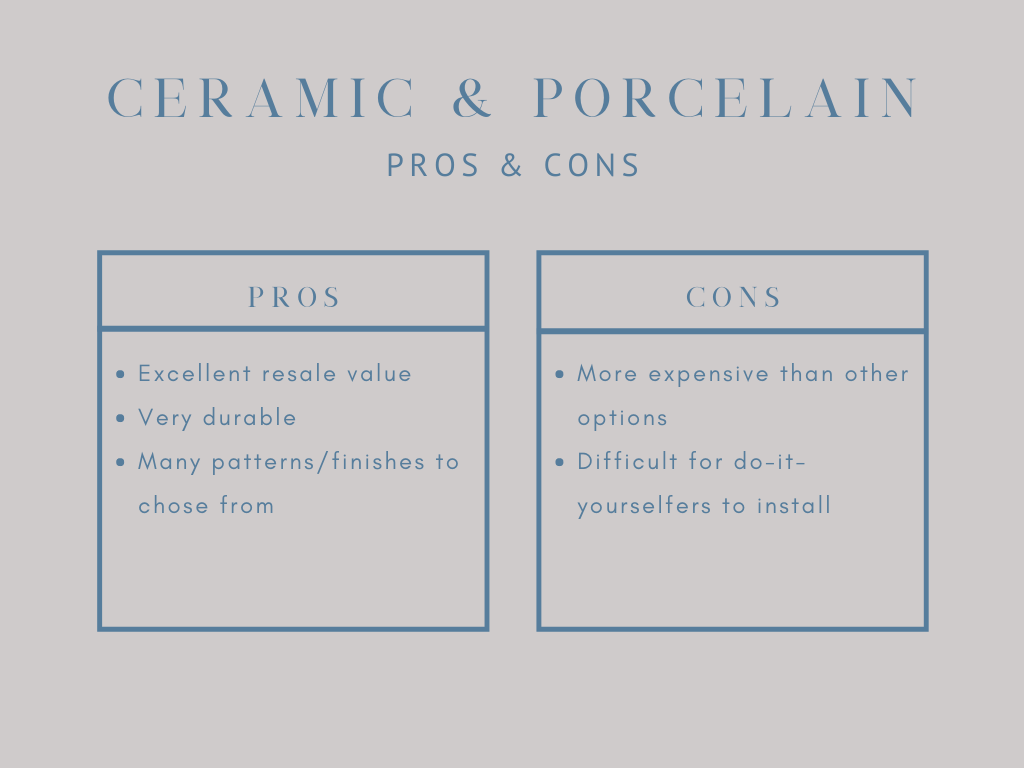
Radiant Heat Bathroom Floors
Both ceramic and Porcelain are suitable for radiant in-floor heat if you are considering installing this.
There are 2 types of radiant heat – electric and hyrondic. The electric ones are easier and less expensive to install and some DIYers have installed it on their own. One radiant heat flooring is Nuheat and you can shop this Radiant Heat on Amazon or this underfloor heating system.
The pros of ceramic or porcelain is that they are easy to maintain and look very classy and clean. Wet tile is slippery. But texturing solves that problem. Smaller tiles are less slippery because more grout is used and the grout acts as a non-skid surface.

Natural Stone Bathroom Floors
Natural stone is a great flooring for bathrooms. During our remodel and tile selection process, we considered marble on the floors because well … I just love the look of marble. It’s so classic and timeless. However, there were some cons to consider for us. While natural stone is highly durable it can be very costly and requires regular sealing.
Since we were remodeling a kid and guest bath at the time the cost and maintenance of natural stone didn’t seem worth it. I’d prefer to put marble in the master bath to enjoy myself rather than in the kids or guest bath. Call me selfish but our budget only goes so far and I want to save the marble for me!
While there are many options to choose from with natural stone tile, it is very durable, but expect to pay more for these benefits.
Shop Natural Stone Tile:
[show_boutique_widget id=”1042355″]
Natural stone tile flooring is one of the more expensive flooring options for a bathroom, but if cared for correctly, it should last 75-100 years.
Natural stone tile is harder to install than ceramic or porcelain and might not be a DIY job. You will have to consider the cost not only of the tile but paying a professional to install as well.
If you do select natural stone ensure you select a stone that is honed instead of polished. Polished stone can be very slippery when wet and be an accident waiting to happen.

Vinyl Bathroom Flooring
Vinyl flooring has been around for decades and is a good choice for bathrooms if you want to update, do-it-yourself and keep an eye on the budget. Since it comes in sheets, planks and tiles, vinyl flooring makes it easy to install
I like the plank option personally for flooring for a bathroom and in areas that are prone to moisture.
In our basement we laid a wood looking vinyl plank flooring called Happy Feet. We LOVE it! If our basement ever floods or has a small leak; the flooring planks can be removed, let the concrete dry and re-lay the planks. The water isn’t going to hurt them. We are going to lay this in our basement bathroom as well. It looks great, is easy to stand on, feels warmer than ceramic or porcelain tile, is less costly and easy to lay ourselves.
There are many other companies selling vinyl flooring either plank or tile. You can shop some options below.
Shop Vinyl Flooring:
[show_boutique_widget id=”1042352″]
Vinyl is so popular, there are thousands of style options available and many companies manufacture some great looking flooring.

Laminate Flooring
Laminate flooring can work in a bathroom but you will have to take necessary precautions to protect its wood base from moisture. You must have tight seams between each plank for water not to seap down in between.
Laminate is easy to clean but has a wood composite or chip base. If this base gets in contact with any moisture it will bubble and expand. Not pretty. You will have to tear it out and replace it.
Laminate flooring is basically resin-impregnated paper atop a wood chip base. The surface of the laminate plank is actually a photograph of wood, slate, marble, or any other type of natural product. On top is a clear coat called the wear layer.
Shop Laminate Flooring:
[show_boutique_widget id=”1042365″]
This bathroom flooring can be installed directly over an existing floor. So, it is another good option for remodeling projects.
Laminate can work in a bathroom and it’s easy for a beginner DIYer to install, but you have to weigh the pros and the cons.
However, while it is great for your budget, bear in mind that these floors only have a life expectancy of 10-20 years.

Cork Flooring
The last one I am sharing on the list is Cork flooring. Cork flooring is very easy to install; just snapping planks together to create a floating floor making this a great DIY choice.
Cork flooring is also a very eco-friendly (highly-sustainable), attractive flooring that can be used in bathrooms and cork is low maintenance.
Cork not only looks good in a bathroom but also feels good on your feet. It’s not cold and hard like ceramic or porcelain. Cork also has antimicrobial properties, and it resists both mold and mildew. So, it is a very healthy choice.
There are a few drawbacks, however. Cork is water-resistant, but it is not waterproof, therefore, you must continually seal your cork floors with multiple layers of polyurethane to protect from water that happens in a bathroom or else your flooring will crack and warp. Not pretty.
Shop Cork Flooring:
[show_boutique_widget id=”1042363″]
If you carefully care for cork flooring it should have a lifespan of about 25 years, but for this reason it will likely not adda much value to your home if you were to sell.
That’s it for best flooring for the bathroom; only you can decide what is best for your style and your budget. I’m a ceramic, tile or natural stone gal. I would rather wait and save for a higher quality product than a short term fix. Any of these flooring options listed above will be great in bathrooms.

Bathroom Flooring Pricing
Let’s round up the pricing guide and recap the flooring options.
- Ceramic and porcelain tiles – Ceramic and porcelain prices range from less than $1 to over $8+ per square foot, plus $4 to $8 for installation. On average, ceramic and porcelain flooring is $5.50 per square foot, $11.50 installed.
- Natural stone tiles – Depending on what natural stone you choose, prices range from $5 to $10+ per square foot, plus $7 installation. On average, natural stone flooring is $7.50 per square foot, $14.50 installed.
- Laminate – As with anything else prices vary. Anywhere from $.70 to $2 a square foot with the average installation cost of $2 – $8 a square foot.
- Luxury vinyl – Prices are based on the level of quality luxury vinyl you choose, and range anywhere from $2 to $5 a square foot, plus around $1.50 for installation. On average, luxury vinyl flooring is $6 per square foot, $7 installed.
- Cork flooring – Prices vary from $3 to $8 a square foot, plus $1 for installation. On average, cork flooring is $5 per square foot, $6 installed.
- Engineered hardwood – The price really depends on the quality of the engineered hardwood flooring you choose, and prices range from $3 to over $14 a square foot, plus another $3 to $8 for installation. On average, engineered hardwood flooring is $7 per square foot, $13 installed.
Hope this was a help if you foresee a new build or remodel!
Final Thoughts on Bathroom Flooring
What flooring would be right for you? Personally, I prefer a more substantial, permanent solution that looks and feels like quality. Porcelain and Ceramic or Natural Stone because if installed properly will last a very long time but also looks the best.
RELATED Bathroom Flooring POSTS:
- Considerations for a Bathroom Remodel
- Major Elements of a Kitchen Remodel
- Marble Kitchen Countertops: All You Need to Know
- Complete Guide to Paint Sheen & Finishes
Best Flooring for Bathrooms
Follow for home decor, DIY and to shop: Instagram | Pinterest | LiketoKnowit

